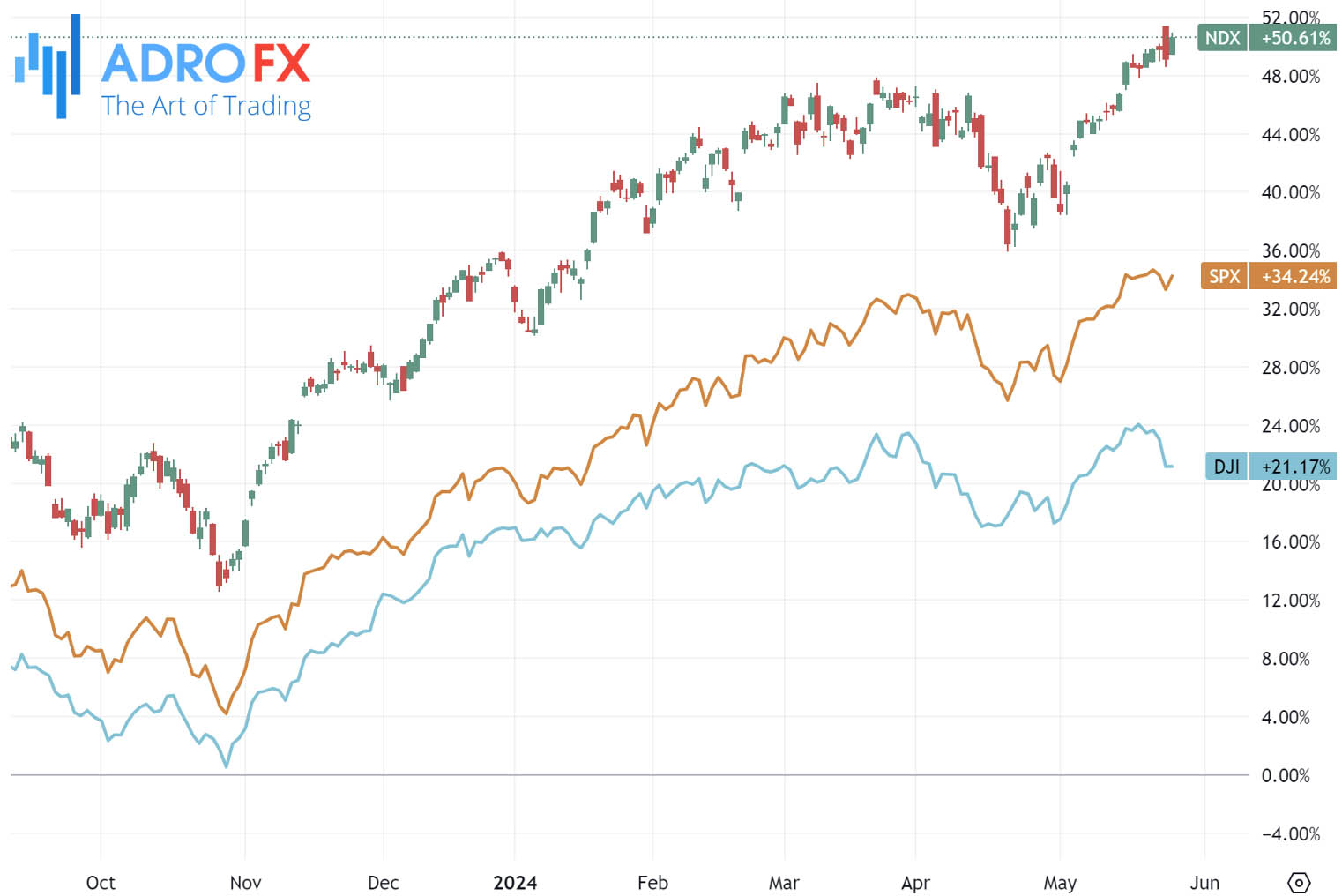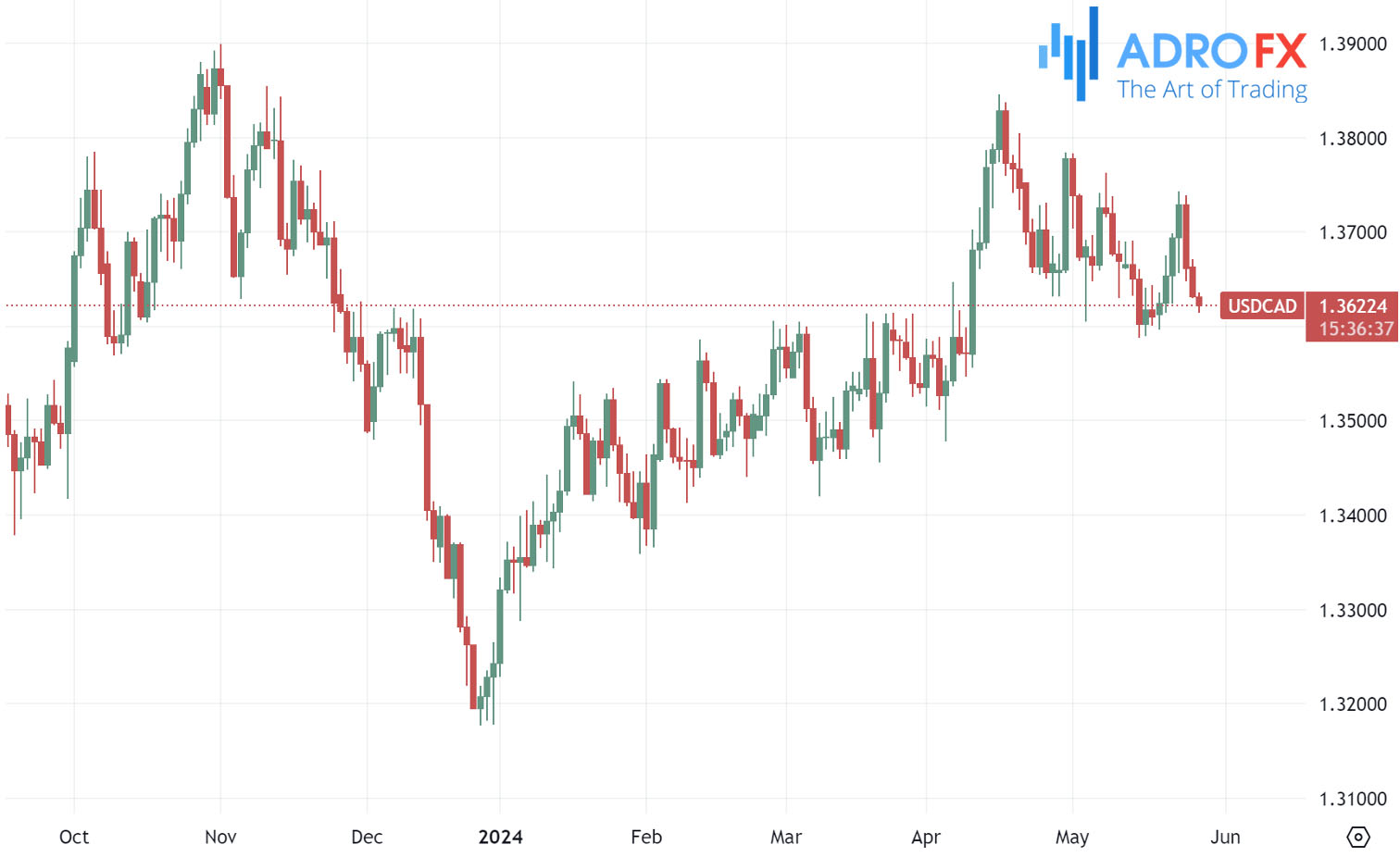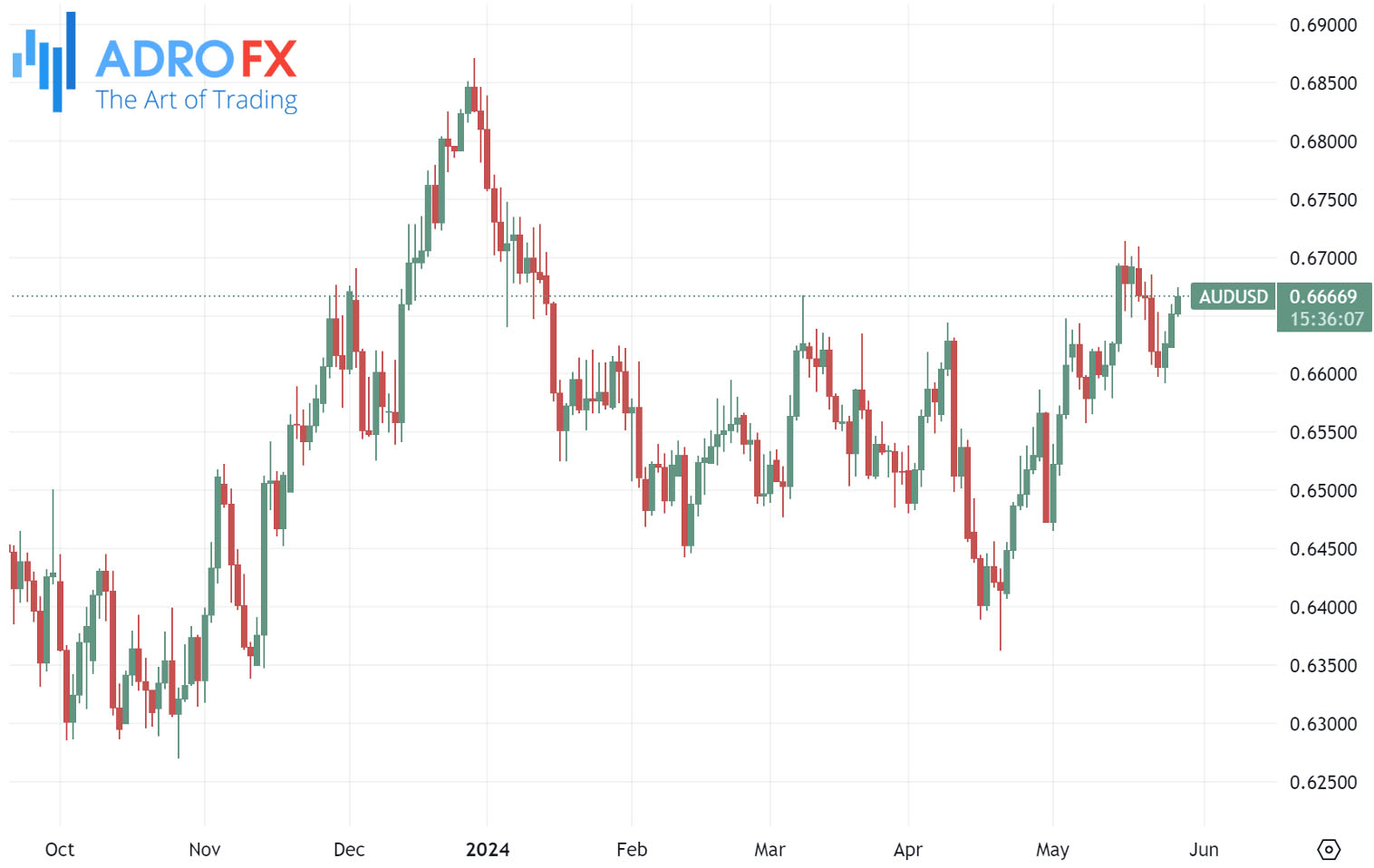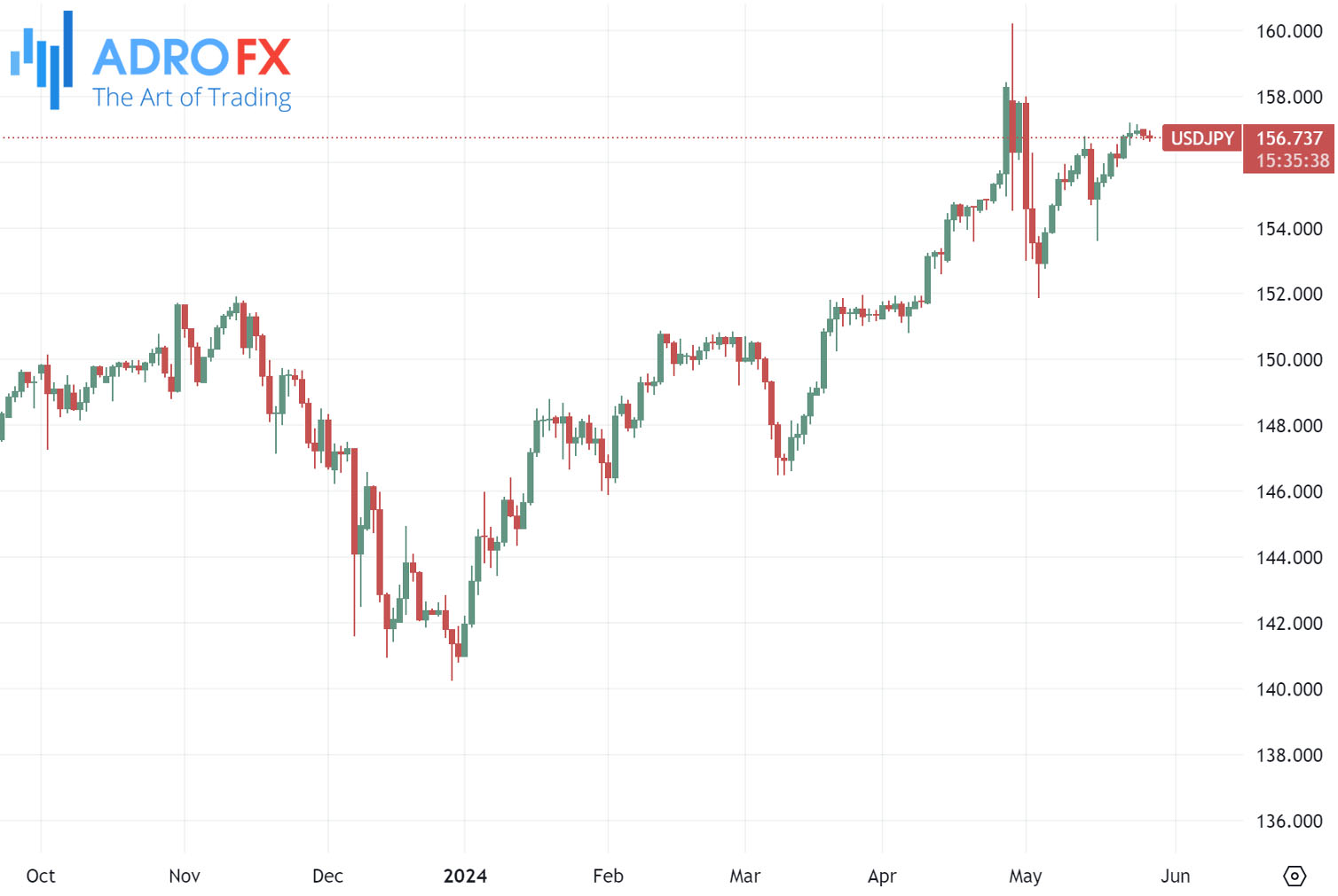US Stock Futures Edge Higher Amid Low Holiday Volumes; Key Inflation Data in Focus | Daily Market Analysis

Key events:
- USA - FOMC Member Bowman Speaks
- USA - FOMC Member Mester Speaks
- USA - FOMC Member Kashkari Speaks
- USA - CB Consumer Confidence (May)
- USA - FOMC Member Daly Speaks
US stock index futures saw a slight rise in evening trading on Monday, with the market's attention focused on upcoming key inflation data that could provide more insights on interest rates.
Trading volumes were low due to the Memorial Day holiday, but activity is expected to increase this week with several important economic reports, including revised first quarter GDP data.
Technology stocks, especially NVIDIA Corporation (NASDAQ: NVDA), played a significant role in helping the NASDAQ Composite reach a record high last week, contributing to the index's weekly gains. The S&P 500 and the Dow Jones Industrial Average also approached record levels, but their progress was limited by losses in most other sectors due to concerns about sustained high interest rates.
Elevated rates reduce the attractiveness of riskier assets like equities and restrict market liquidity available for stock investments.
On Friday, the S&P 500 rose by 0.7% to 5,304.72 points, while the NASDAQ climbed 1.1% to a record 16,920.79 points. The Dow remained almost unchanged, closing at 39,069.59 points.

The USD/CAD pair dropped further to near the key support level of 1.3600 during Tuesday's Asian session. The Canadian Dollar faced pressure as the US Dollar weakened, even though traders anticipate the Federal Reserve will keep interest rates steady in the September meeting.

Despite the delay in anticipated Fed rate cuts, market sentiment remained positive. The US Dollar Index, which measures the Greenback against six major currencies, extended its decline for the third consecutive session on Tuesday, falling to around 104.40.
Meanwhile, the Canadian Dollar benefited from the upbeat market sentiment. However, its near-term outlook remains uncertain as investors speculate that the Bank of Canada may begin cutting interest rates in the June meeting.
The risks of persistent inflation in Canada have decreased due to weak consumer spending and a bleak economic outlook, leading to increased bets on rate cuts in June. This week, investors will closely watch the Q1 GDP data to gauge Canada's economic health.
The Australian Dollar continued to strengthen against the US Dollar for the third consecutive session on Tuesday, despite Australia's Retail Sales (MoM) rising by only 0.1% in April, reversing the previous 0.4% decline and missing market expectations of 0.2%.

The AUD's strength was also supported by improved risk appetite. Additionally, the latest Reserve Bank of Australia meeting minutes indicated that the board found it challenging to predict future changes in the cash rate, noting that recent data increased the likelihood of inflation remaining above the 2-3% target for an extended period.
The Japanese Yen continued its upward trend for the second consecutive day on Tuesday, bolstered by Japan’s Corporate Service Price Index (CSPI). The index recorded a year-over-year increase of 2.8% in April, exceeding expectations of 2.3% and marking its fastest growth rate since March 2015.

Further support for the Yen may have come from comments by Japan Finance Minister Shun'ichi Suzuki, who hinted at potential verbal intervention. Suzuki underscored the importance of stable currency movements reflecting economic fundamentals and noted that he is closely monitoring foreign exchange trends. However, he did not confirm whether Japan has engaged in any currency intervention.
The NZD/USD pair extended its rally near 0.6165 on Tuesday during the early Asian session, reaching its highest level since March amid a softer US Dollar Investors are awaiting new catalysts, with key US economic data, including the GDP and Core PCE Price Index, due later this week. Additionally, the Reserve Bank of New Zealand’s Governor Orr's speech on Friday will be closely watched.

Market expectations for US Federal Reserve interest rate cuts have diminished following hawkish comments from Fed officials and stronger-than-anticipated US economic data. Attention will be focused on the US PCE inflation data on Friday, with the Core PCE projected to increase by 0.3% MoM and 2.8% YoY in April. Higher-than-expected inflation could reduce hopes for Fed rate cuts and strengthen the Greenback.
Conversely, RBNZ Deputy Governor Christian Hawkesby emphasized that cutting interest rates is not under consideration in the near term. The RBNZ recently held its cash rate steady at a 15-year high of 5.5%, indicating that a restrictive policy is necessary to ensure inflation returns to the 1-3% target range.
In China, Shanghai announced property sector support measures aimed at optimizing the local real estate market and promoting stable development, as reported by the Global Times. Analysts believe these measures will significantly boost the housing market. The combination of the RBNZ's hawkish stance and the Chinese stimulus plan continues to support the China-proxy Kiwi against the USD.









